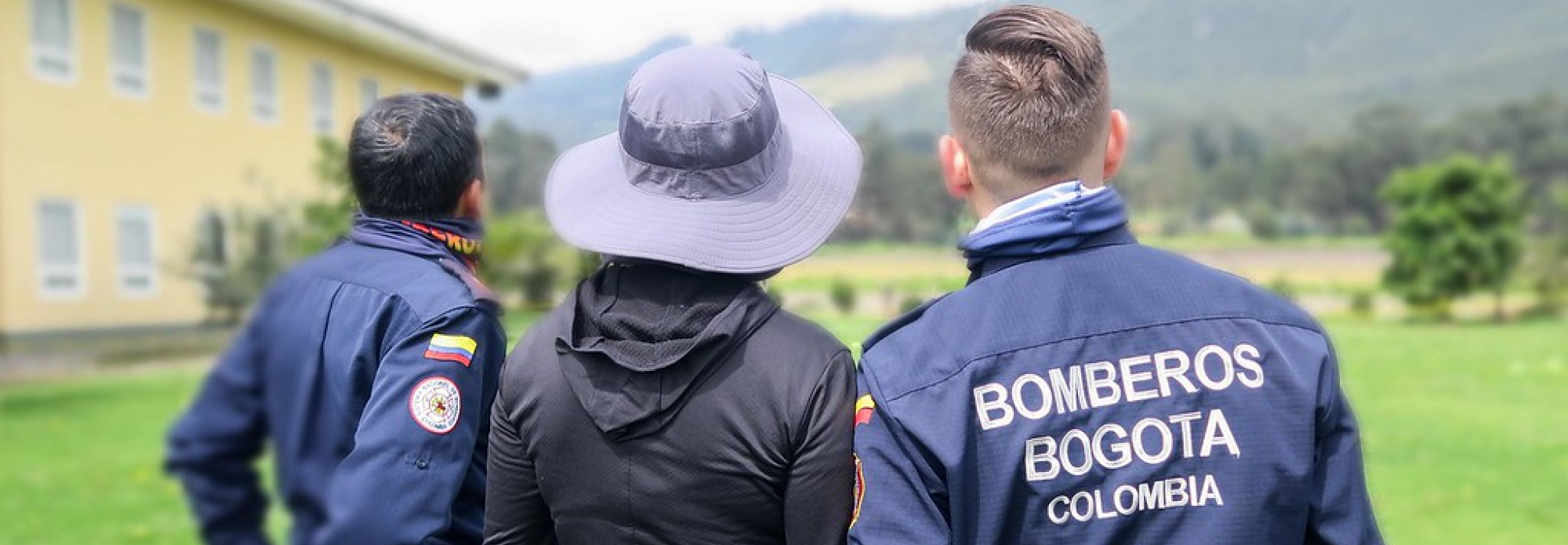On a sunny October afternoon last year, the Bomberos de Bogotá (Firefighters of Bogota) received a call reporting the poor condition of a residential building with fears it might collapse. The Bomberos immediately sealed off the area and evacuated people at risk. Perhaps more importantly, they were able to assess the entire building quickly and safely using a multi-rotor drone. A few months earlier, that wouldn’t have been possible. Bomberos de Bogotá didn’t have the capacity, let alone a subdivision dedicated to the technology.
Today, unmanned aircraft systems (UAS) are finding air space in their operations.
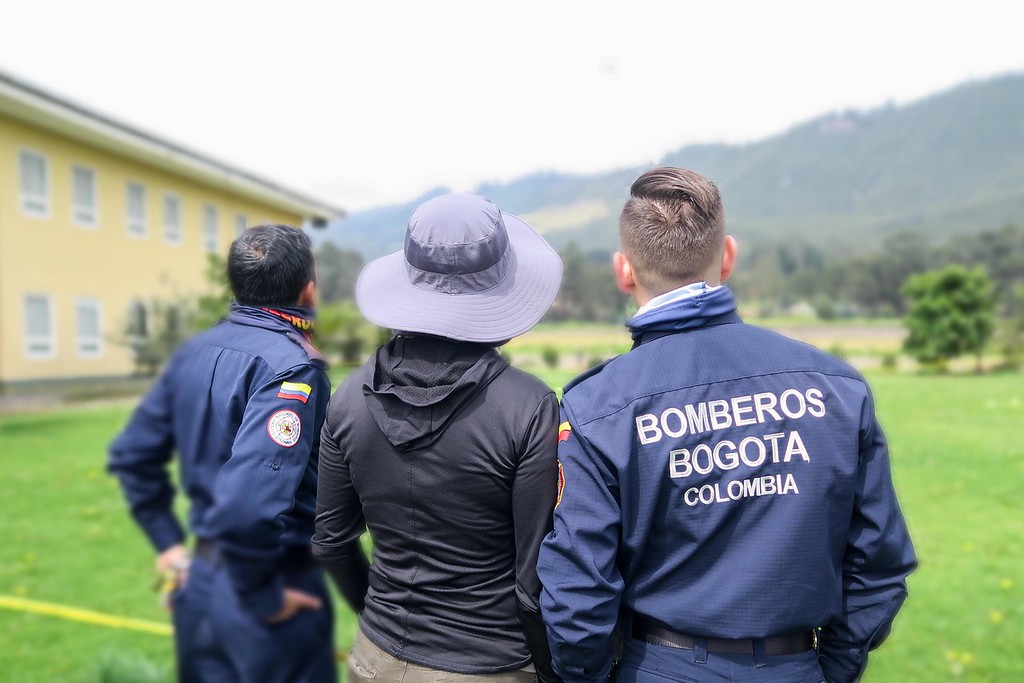
Firefighters of Bogota in the UAS training, November 2018. Photo: WFP / Laura Lacanale
The World Food Programme (WFP) conducted a UAS workshop in Colombia in December 2017 to develop a coordination model for humanitarian and rescue operations involving drones. Nearly a year later, Jhonatan Valenzuela, second lieutenant with the Bomberos de Bogotá, captivated a conference room of peers and representatives from 20 different organizations, talking about the progress the Bomberos had achieved to date.
Like father, like son
Passion for the rescue profession was instilled in Jhonatan at a young age. In his own words “I feel like I have been a firefighter my whole life. My father serves as Captain in charge of a training center in Gachetá en Cundinamarca, in Guavio Province, and I have followed his footsteps since I was five”. Today, Jhonatan trains fellow rescuers on how to operate emergency response vehicles, personal protection equipment and now drones. “Bomberos de Bogotá started from scratch. We didn’t know much about drones, but thanks to WFP, we realized that we should not only focus on this one technology but look at a broader technological framework.”
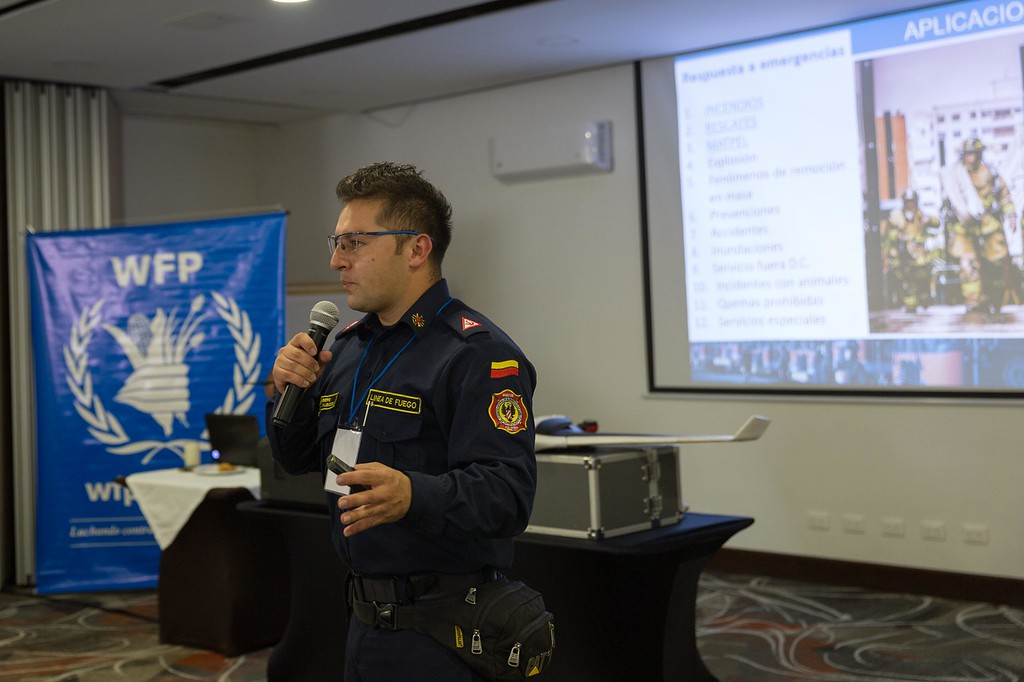
In the past year, Jhonatan along with his colleagues advocated to standardize the UAS registration process by creating minimum standards for operators; decongesting airspace through flight scheduling. “Being prepared for emergencies and having protocols in place for the response is key for us. Therefore, we started building capacity in this area,” Jhonatan explains. The Bomberos have also started to raise community awareness — #BomberosTeEnseñaDeDrones (Firefighters Teach You about Drones) is a public information campaign on Do’s and Don’ts when operating personal aircraft.
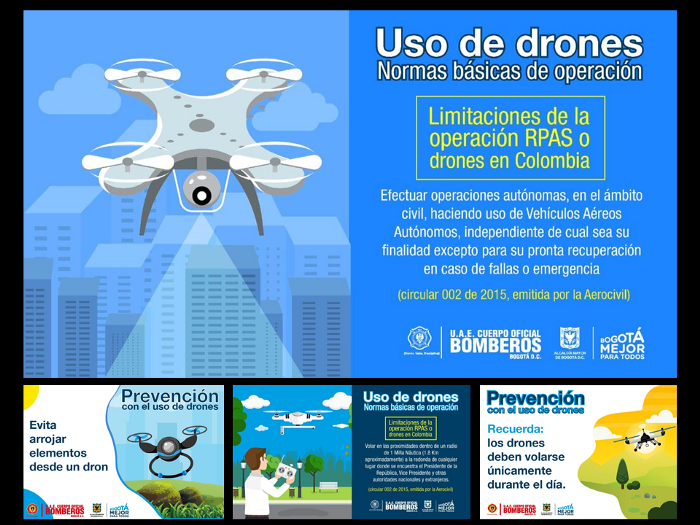
Biggest drone training
The follow-up training conducted in November 2018 — organized by WFP in collaboration with the National Disaster and Risk Management Unit (UNGRD) — was the biggest in the series yet. The event gathered more than 50 participants delegated by firefighters, national police, air force, civil aviation authorities as well as humanitarian organizations such as Red Cross and United Nations (UN) agencies. To maximize the impact of drones in rescue operations in Colombia, Bomberos de Bogotá invited other fire departments to attend the training, namely representatives from the Villeta, Guayabetal and Puli provinces. Practical applications of drones for emergency preparedness were discussed, along with agriculture, climate monitoring and disaster response. Hands-on flight time,2D mapping, and 3D modelling were also part of the training package.
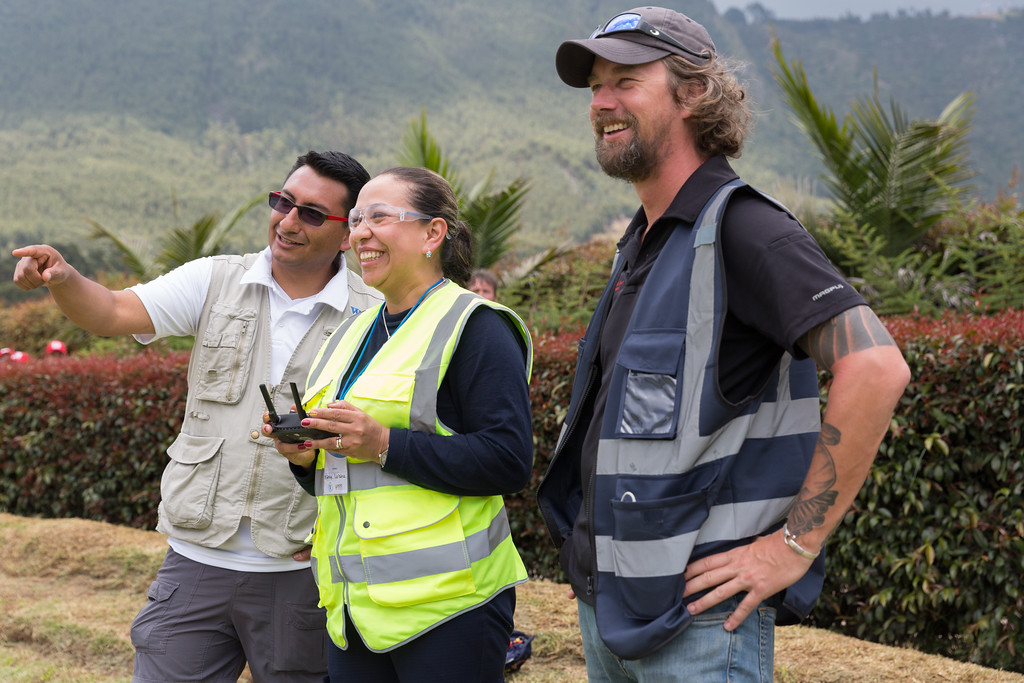
“Drones can immensely improve our work in risk management, prevention and disaster response, and this training provided us with the right tools to reach that goal. Using drone technology will allow firefighters to be at the forefront of technological changes happening worldwide,” says Nancy Liliana Lozano from the risk management unit with Bomberos the Bogota. “It is especially important as a woman to participate in this sort of learning experience to strengthen the gender representation in the emergency response and the technology sector,” she adds.
Leading by example
“The Bomberos de Bogotá is a perfect example of what WFP is working to support — local initiatives using innovative technology to drive solutions to problems in the field,” says Adam Marlatt, Global UAS Coordinator at WFP. Colombia faces several natural disasters like earthquakes, hurricanes, tropical storms, but is also struggling with impacts of environmental degradation and climate change. With their mission to protect the natural resources, historical heritage and the lives of the people of Colombia, firefighters are often among the country’s first responders.

The Bomberos de Bogota’s drone operations are being broaden to strengthen safety and efficiency of their work in different ways: the technology will be extended to conduct search and rescue activities in mountains, collapsed structures and bodies of water; assess buildings at risk; as well as monitor and evaluate fire incidents in progress. The Bomberos plan on expanding dedicated drone personnel to 20 rescuers. “With a dedicated unit, the drone team will act as a capacity multiplier when fighting fires, allowing the Bomberos to detect where crews need to evacuate trapped people [using thermal imagery cameras] and detecting the size of the emergency for incident commanders to more accurately make decisions.” Adam says. “This will lead to a safer, more efficient response for not only the people of Colombia but also internationally, as Bomberos deploy as an Urban Search and Rescue Team certified by UN OCHA International Search and Rescue Advisory Group (INSARAG).”

